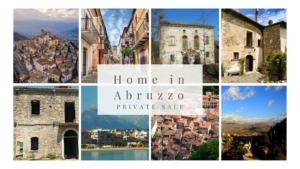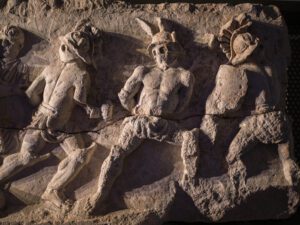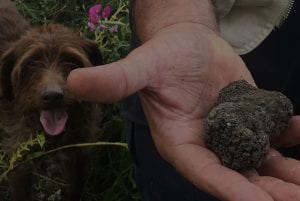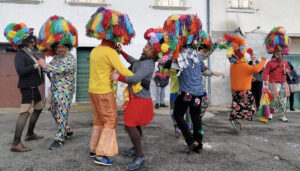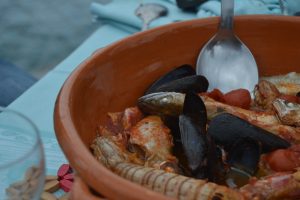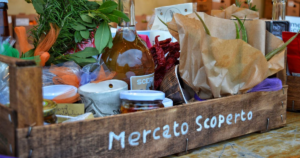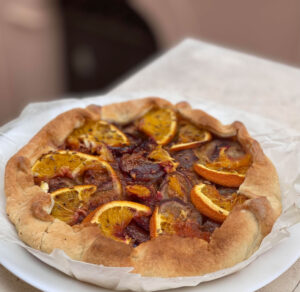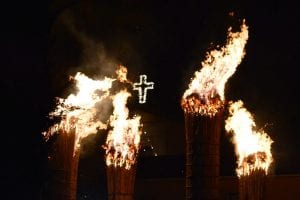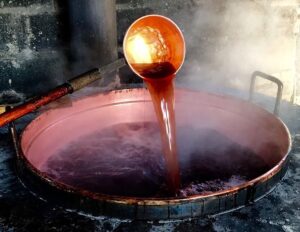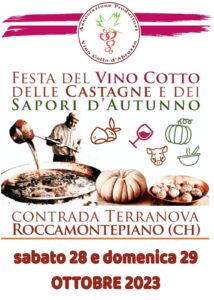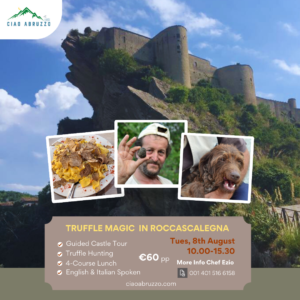
Ortona has a historical reputation of being fought for and bought; its recent oil fight was one of the reasons we visited this little southerly Abruzzo port town in Chieti, which the famous local poet D’Annunzio described as a “blue curve on a golden hill”.
Steeped in a history that can be traced right back to the Bronze Age, Ortona gets name checked most famously for housing relics of Doubting Thomas, (housed in the main church, chiesa S.Tommaso), and the inherent problems that being awarded an independent Merchant Charter by the Holy Roman Emperor Henry IV in the C12th brought – i.e. ongoing battles with landlocked neighbouring town of Lanciano on who it imposed heavy export & import taxes.
 In the C15th this small but valuable port was invaded and practically destroyed by a directive issued by the Kingdom of Naples’ heir, Alfonso Aragon. He then built the still-standing beautiful castle that to be honest is really the oldest architecture you really get to see in the town.
In the C15th this small but valuable port was invaded and practically destroyed by a directive issued by the Kingdom of Naples’ heir, Alfonso Aragon. He then built the still-standing beautiful castle that to be honest is really the oldest architecture you really get to see in the town.
There is the Palazzo Farnese that hosts the local art which Marguerite of Austria, daughter of Emperor Charles V commissioned when she ‘acquired’ the town but Ortona is a modern Italian town; don’t expect narrow winding alleys and medieval architecture here to recount its glorious past, in large part due to the terrible damaged wreaked upon the town during its German occupation in the 2nd World War.
We arrived in the middle of the procession for the 66th year’s commemoration by veteran Canadian soldiers, returning to celebrate and remember the friends they had lost in Ortona’s most recent famous battle known as “Little Stalingrad”. Accompanied by one lone piper they lay white & red single carnations at the haunting anti-war Price of Peace monument in remembrance of the 1,365 Canadian soldiers who were killed in one of the 2nd World War’s ugliest and most brutal of hand combat battles that ran over Christmas 1943.

Planned by General Montgomery, these young volunteer soldiers hit the winter liene that crack force German paratroopers held under direct orders from Hitler for occupying this deep water port. Most of the town was razed to the ground in these 8 days when literally soldiers fought not just house by house but room by room, and you can still see blank plots in the town waiting to be rebuilt. For those wanting to know more about this terrible time you can visit The Battle of Ortona Museum or go up driving through the local vineyards to visit the Canadian Moro River War Cemetery or the Torino di Sangro Cemetery.
 On a cheerier note for music lovers, visit the Palazzo Corvo that hosts the Tosti Museum. Sir Francesco Paolo Tosti is the Ortonese born Belle Époque salon composer, famous for becoming the Queen of Pizza’s (aka Princess Margherita of Savoy) music professor, as well England’s most popular salon composer when he lived there between 1880- 1913.
On a cheerier note for music lovers, visit the Palazzo Corvo that hosts the Tosti Museum. Sir Francesco Paolo Tosti is the Ortonese born Belle Époque salon composer, famous for becoming the Queen of Pizza’s (aka Princess Margherita of Savoy) music professor, as well England’s most popular salon composer when he lived there between 1880- 1913.
Ortona Tips
 Walks – Enjoy the walk from the castle up to restored theatre the promenade is quite lovely, and with good views.
Walks – Enjoy the walk from the castle up to restored theatre the promenade is quite lovely, and with good views.
Shopping – Ortona is in Montepulciano d’Abruzzo land; not only should you use your hours here to go wine tasting but in addition we recommend trying Rattafia. This is a beautiful liqueur that is made from the local wild sour cherries that have been steeped in Montepulciano grape juice and skins. It’s quite unique in its fresh bitter-sweet mostro cotto way, a world away from the sweet pudding type Kirsch liqueurs of Northern Europe, indulge and be very pleasantly surprised.
Try sampling Rattafia at a wonderful shop that specialises in life’s little luxuries, opposite the theatre called La Bottega di Corso Garibaldi on unsurprisingly Corso Garibaldi. It is run by a husband and wife team one of which runs the Chieti Association of Italian Sommerliers and so not just friendly but they really know their stuff.
Restaurants – Read our review of Ristorante al Vecchio Teatro

For those that want to get outside ‘the port’ for a quick vista without a day on the beach do try and get outside and see ‘Bella Acqua’ where you can see in detail the start of the Trabocchi Coast; this is an area that was fought for by local artist Fabrizia Arduini and subsequently designated a green area, with a bicycle route planned down to Vasto, 10 years ago, but which the present mayor has postponed in favour of schemes for oil. It was from Ortona that galvanised residents enforced a temporary bill halting oil exploration across Abruzzo in 2008. The oil giant ENI was planning to build an oil refinery here slap bang in the middle of its award winning Montepulicano d’Abruzzo vineyards. This bill expires at the end of 2009, and local communes backed by the church and WWF are trying to extend the moratorium as there are plans to mine up to 49% of Abruzzo for black gold. Scarily short-term thinking by the Italian government and archaic in the sense of profit for a few, even worse Italy has no environmental health laws to protect those that would end up living close an oil refinery.
Further Reading
Battle of Ortona Museum (Museo della Battaglia), Corso Garibaldi,


